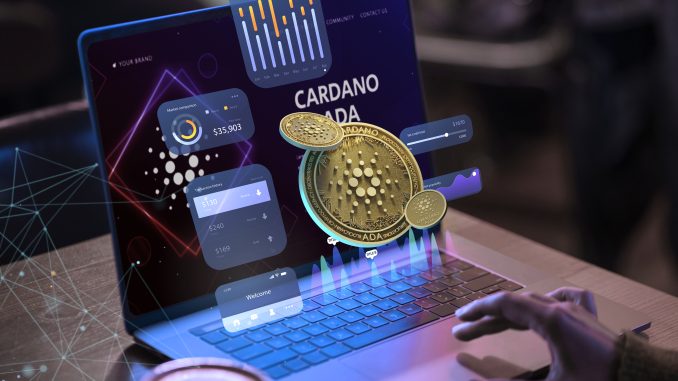
Challenges of Crypto Asset Valuation
Cryptocurrencies present unique challenges for valuation compared to traditional assets. Their inherent volatility, lack of physical backing, and the nascent stage of the underlying technology make valuation particularly complex. Traditional financial metrics, which rely heavily on cash flows and earnings, are often inapplicable to cryptocurrencies that operate as decentralized networks and digital assets.
Alternative Valuation Models
To overcome these challenges, investors and analysts employ a variety of alternative models to value cryptocurrencies and blockchain-based assets more accurately.
1. Network Value to Transactions (NVT) Ratio
The NVT ratio, often referred to as the “PE ratio of the crypto world,” compares the network value (market cap) of a cryptocurrency to the volume of transactions on its network. A high NVT ratio suggests that a cryptocurrency is overvalued relative to the actual economic activity occurring on its network, while a low NVT indicates undervaluation.
2. Network Value to Metcalfe (NVM) Ratio
The NVM ratio applies Metcalfe’s Law, which states that the value of a network is proportional to the square of the number of its users. By comparing the network value to the square of the number of active users, this model seeks to determine whether a cryptocurrency is over or undervalued based on its user base growth.
3. Decentralization and Security Metrics
Metrics such as the number of nodes, the geographical distribution of nodes, and the hash rate (for proof-of-work systems) provide insights into the security and decentralization of a blockchain. A more decentralized and secure network typically warrants a higher valuation, reflecting its resilience against attacks and network failures.
4. Token Utility and Scarcity
The intrinsic value of a token often depends on its utility within its ecosystem. Tokens that serve multiple purposes (e.g., governance, staking, payment) or those with deflationary mechanisms (e.g., token burns, limited supply caps) might possess higher intrinsic value.
Qualitative Factors Affecting Valuation
1. Regulatory Environment
The regulatory landscape can have profound implications for cryptocurrency valuations. Positive regulatory developments can enhance investor confidence and increase demand, while regulatory crackdowns or uncertainties can lead to market instability and reduced valuations.
2. Technological Innovations
Advancements in blockchain technology, such as scalability solutions and interoperability developments, can significantly impact an asset’s future potential and, consequently, its valuation.
3. Market Sentiment and Adoption Trends
Investor sentiment and broader market trends play crucial roles in the valuation of cryptocurrencies. Increasing adoption by consumers, businesses, and governments can drive demand and increase the value of a digital asset.
Best Practices in Crypto Asset Valuation
Valuing crypto assets requires a combination of quantitative analysis, qualitative assessment, and a deep understanding of the underlying technology. Investors should:
- Regularly update their valuation models to incorporate the latest market data and network statistics.
- Remain informed about technological advancements and regulatory changes that could impact asset valuations.
- Use a diversified set of models to cross-verify valuation outputs and mitigate the impact of model-specific biases or limitations.
FAQs (Frequently Asked Questions)
Q: What is market capitalization, and why is it insufficient for crypto asset valuation?
A: Market capitalization is calculated by multiplying the current price of a cryptocurrency by its total circulating supply. While useful as a quick reference, it does not account for factors such as transaction volumes, network activity, technological developments, or regulatory impacts, which can all influence an asset’s intrinsic value.
Q: How does the NVT ratio help in valuing cryptocurrencies?
A: The NVT ratio helps in assessing whether a cryptocurrency is overvalued or undervalued by comparing its market cap to the volume of transactions processed on its network. An unusually high NVT ratio could indicate that the asset is overvalued relative to the amount of economic activity it supports.
Q: What role do technological innovations play in crypto asset valuation?
A: Technological innovations can enhance the functionality, efficiency, and security of a blockchain, potentially leading to increased adoption and higher valuations. Innovations such as scalability solutions or enhanced consensus mechanisms can make a blockchain more practical and valuable.
Q: Can regulatory changes affect cryptocurrency valuations?
A: Yes, regulatory changes can significantly impact cryptocurrency valuations. Positive developments, such as the approval of crypto derivatives or ETFs, can boost prices, while stringent regulations or bans can cause values to plummet.
Q: How important is network security in valuing blockchain assets?
A: Network security is crucial, as it impacts an asset’s trustworthiness and longevity. Higher security, evidenced by factors like a high hash rate or robust node distribution, can suggest a lower risk of attacks and, thus, a higher valuation.
Conclusion
Valuing cryptocurrencies and blockchain-based assets requires more than traditional financial metrics. By incorporating models like the NVT ratio, considering network-based metrics, and evaluating qualitative factors such as regulatory impacts and technological advancements, investors can gain a more comprehensive understanding of an asset’s true value. As the crypto market continues to mature, these valuation models will evolve, helping investors make more informed decisions in this dynamic and rapidly changing landscape.

Leave a Reply